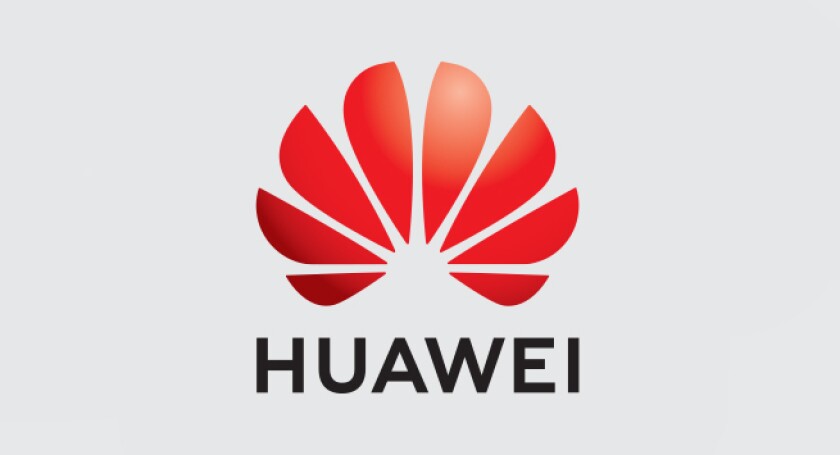Indoor coverage is one of the main strategic and operational challenges for MNOs and with the arrival of 5G, enhancing indoor capacity is becoming even more critical. As traditional DAS systems will not be able to support many 5G indoor applications, Huawei has developed LampSite, a Digital Indoor System (DIS) that improves user experience while cutting down ownership and operational costs. The company, who has been at the forefront of 5G innovation globally, presents the benefits of this new technology and explores how towercos can better prepare for 5G integration while diversifying their offer.
4G has changed people’s lives, but 5G is set to change societies. This new technology provides basic data services and further extends telecom industry boundaries by allowing and supporting more applications for our day-to-day activities, business and industry development. Its integration will positively influence people’s life, making work and travel more convenient and intelligent, using robotic meal delivery, automatic driving and remote VT among many other applications. 5G can also help industries to improve efficiencies, implement smart, automated production systems and optimise technology use.
5G delivers a much better user experience than 4G due to its high data rate and low latency. 5G’s data rate is ten times faster than 4G, so it takes only a few seconds to download an HD movie on a 5G network. In addition, 5G can achieve a typical end-to-end (E2E) latency of 5–10 ms, far shorter than the approximate typical E2E latency of 50–100 ms in 4G.
Following the finalisation of the 3GPP Release of 15 standard for 5th Generation (5G) mobile communications and the issuance of 5G licenses in various countries, 5G deployment is now accelerating internationally
1.
Figure 1 5G network scenarios and performance requirements1

The importance of indoor systems deployment for 5G
Most people spend more than half of their time indoor every day. Statistics show that more than 70% of 4G services are used indoors and industry predictions confirm that this percentage will surpass 80%. 5G will usher in the possibilities of home VR, holographic communication and HD mobile office services, boosting indoor user demand. However, 5G will increase the gap between outdoor and indoor user experiences, as higher bands will be used. Outdoor C-Band or millimeter wave signals are unable to deliver intensive indoor coverage or offer a satisfying indoor experience due to more serious penetration loss
2.
From 2G to 5G, the outdoor antenna technology has evolved from single input single output (SISO) to Massive MIMO (64 input 64 output), while for most indoor systems, the antenna system is remaining in SISO. The MIMO capability for indoor system already lagged behind the MIMO capability of the terminal, as 5G devices already support four receivers. The experience gap between indoor and outdoor has been further widened.
According to statistics, more than 90% of user complaints are related to indoor applications and experiences, hence an independent and MIMO supported indoor system is urgently required to narrow the experience gap between outdoor and indoor.
Figure 2: Penetration loss at different spectrum bands
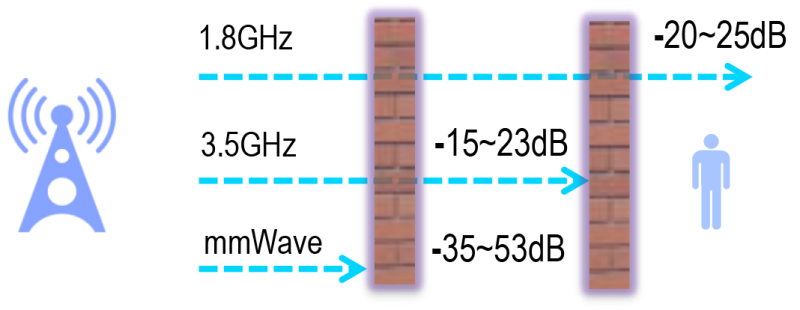
Figure 3: Indoor system needs consider 5-10 years’ demand

Should towercos invest in indoor coverage?
On one hand, building an independent Indoor System will undeniably require a considerable investment from MNOs, who are dealing with a lot of financial pressure. Sharing access to a third party indoor system will reduce the total cost of ownership (TCO) for MNOs. Towercos can help their clients and strengthen their position by including these type of solutions in their offerings, also allowing MNOs to reduce their capex while preparing for 5G integration.
On the other hand, building owners are increasing their demands and prices, so sharing access to DIS can help in reducing leasing cost. Moreover, many owners are open to the integration of sharable indoor systems to avoid duplicate equipment and construction on their facilities. Indoor systems present a great opportunity for towercos as they can improve their indoor coverage services, satisfy their clients’ needs and diversify their offer.
Indoor 5G service requirements and network construction suggestions
In the 5G era, we will see many more indoor scenarios for users. Different service requirements lead to diverse network construction requirements. In order to keep up with the booming and diversified 5G services, a network with flexible capacity needs to be adequately prepared. New 5G networks not only need to meet the changing volume requirements of services as time and areas vary, but also must cope with rapid surges in traffic.
Table1 Relationships between various services and bandwidth/latency1
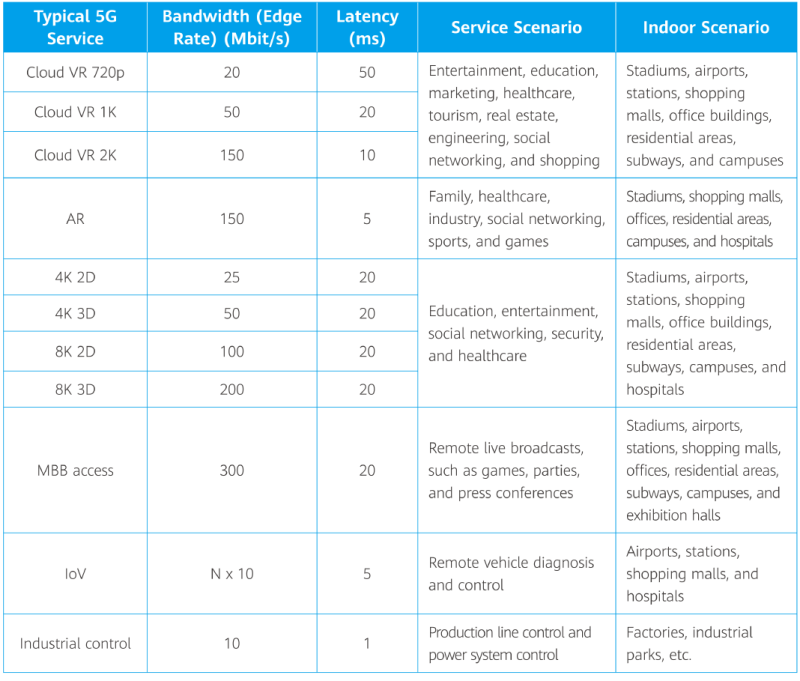
Indoor Digitalisation: the vital shift for 5G-readiness
The conventional distributed antenna system (DAS) solution is unsuitable for 5G-oriented evolution. Firstly, existing DAS can’t support C-band or higher frequencies. Secondly, the capacity expansion and reconstruction of DAS requires intricate and lengthy engineering procedures and secondary site visits. Thirdly, DAS does not support real-time visualised management as it uses passive devices. Therefore, DAS is an unsuitable solution for the imminent arrival of 5G.
Digital Indoor Systems (DIS) provide a scalable, flexible and efficient approach to indoor coverage, which can be deployed now while also providing a smooth path to 5G and to future waves of use cases4. In addition, it can also provide us full visibility of the system’s status and health, allowing us to identify and often fix problems remotely. Longer-term investment plans for indoor sites and site acquisition/management difficulties will drive the adoption of DIS, especially through infrastructure sharing. DIS, which offer a smart and efficient solution over DAS, can create new opportunities for towercos to increase revenue while reducing total cost of ownership (TCO).
Figure 4: Comparison of DIS versus DAS5
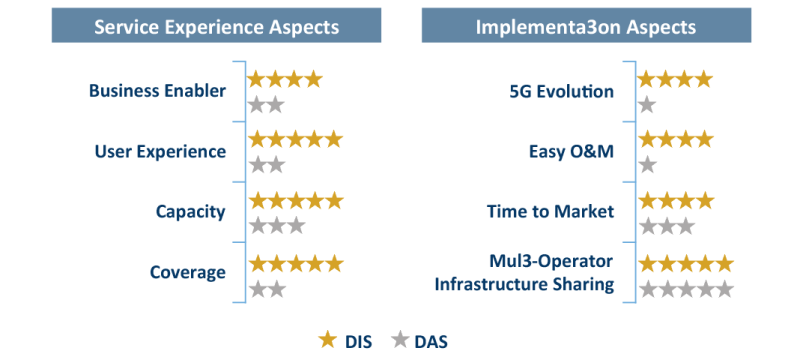
Figure 5: Comparison of DIS versus DAS
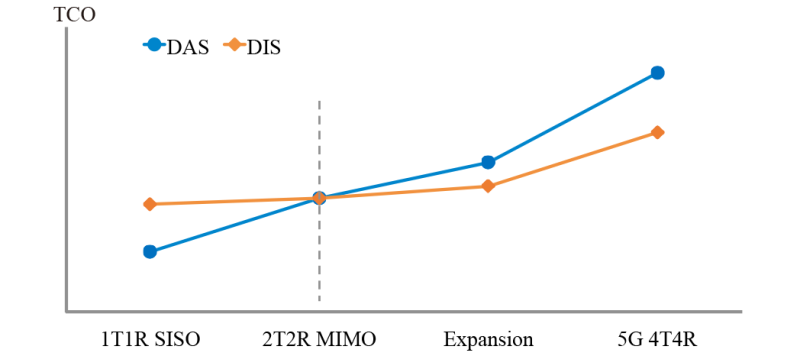
Bringing efficiencies to DIS rollout
LampSite is Huawei’s Digital Indoor System (DIS) solution, which compared with DAS has simpler architecture, higher capacity, flexible capacity management capabilities and end-to-end visible O&M possibilities.
1. Simpler and 5G-oriented architecture: LampSite only has 3 layers: BBU, RHUB and the pRRU. One pRRU only needs one optical/electrical hybrid cable to support 4T4R in C-Band. Compared with a traditional DAS system, which needs four cables and passive elements to support 4T4R, LampSite has a simpler architecture and delivers higher performance.
2. Flexible capacity management: LampSite can be easily configured remotely based on traffic requirements. When the traffic is not heavy, several pRRUs in one building can be configured as one cell. When the traffic increases, you can split the original cell into several cells to provide higher capacity without re-cabling work.
3. Highest integration level: Huawei LampSite can support four MNOs. Each MNO can use four frequencies simultaneously, using just one pRRU as each frequency supports full band instantaneous bandwidth (IBW). LampSite supports both RF feed in mode and Huawei BBU feed in mode, which can save 50% space of the equipment room when two MNOs are using BBU feed in mode.
4. End-to-end visible O&M: pRRU, RHUB and BBU can be monitored remotely by Element Management System (EMS). Faulty equipment can be displayed on both the monitoring system and mobile app, which improves the O&M efficiency.
Huawei DIS can be currently found in various landmark buildings around the world including airports in Istanbul and Johannesburg, the Metro in France, Dubai’s Mall, Lakhta Center in Russia as well as in many World Cup stadiums in Qatar By Q3 2019, Huawei had distributed more than 480,000 units of 5G pRRU.
Figure 6: Huawei can help towercos build the DIS more efficiently

DIS is expanding across Asia
We are seeing an exponentially increasing demand for DIS in Asia and we have already integrated this technology in several venues across the continent including the Shatin to Central Link (SCL) of Hong Kong’s Mass Transit by HKT and in airports with high passenger flow in Thailand, Indonesia, Singapore and the Philippines. There are also many shopping malls such as the Marina Bay Sands and Central World Thailand that are using our DIS solution to enhance indoor coverage.
Many towercos in Asia Pacific have carried out DIS proof of concept (PoC) studies and we have collaborated with edotco in Bangladesh and Myanmar, PT Mac, THB and MJA in Indonesia and PLA in Vietnam. We are also testing DIS in Sri Lanka and Cambodia. In all those deployments, DIS are helping to manage the capacity scalability needed on short notice to ensure all relevant data is captured.
References
